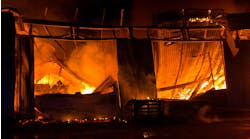Consider the following statement about lean from one of the nation's most successful lean operators: "We're going to see the road of lean littered with casualties."
That comment comes from David Fait, CEO of Phoenix-based Auto Body World whose lean Rapid Production Model (RPM) system generates more than $23 million annually from six locations. That system was a key reason ABRN named Auto Body World its Top Shop in the nation in 2009.
Fait hasn't changed his position on lean. He and his staff continue to refine RPM and are enthusiastic about their model. Fait worries much of the buzz about lean has created misconceptions about what lean is and how it can be implemented most effectively. He's concerned these misconceptions could sink shops that are betting their survival on lean because they have yet to grasp the basis and methodology completely.
Fait isn't alone in his thinking. Repairers, including other Top Shop finalists lauded for their lean production models, say the definition of lean differs dramatically throughout the industry. Some notions they've heard don't jive with the lean principles they employed during their challenging journeys to become successful lean operators. These repairers say the confusion surrounding lean could end up costing shops who go down the wrong lean path dearly.
Shops can take important steps to keep this from happening. If you're in the process of going lean or just thinking about it, it's time to reassess what you know (or think you know) about lean and reset your plans and expectations. Start by reviewing these five widely held myths about lean that could be short circuiting your lean transformation.
MYTH 1: There's a single lean model shops can adopt
"I get the same call every couple of weeks: An owner visits or hears or reads about a shop with a top-tier lean system, and he wants the same system," says Brent Armitage, a consultant from Tampa, Fla. "I tell them the same the same thing: Go buy that shop. That's the best way to get it."
Armitage explains it's natural for repairers to think there's a single lean system they can install. They're already used to dealing with some uniformity in their industry, for example, in the procedures shops use to repair vehicles, maintain their books and handle DRPs. It would only follow repairers would see lean the same way, as a cookie cutter system that can be dropped into any shop, Armitage says.
Lean isn't a one-size-fits-all process – there's no one single model, he says. Instead of focusing on the lean systems of one shop, shops need to realize lean differs markedly from one shop to another.
"Lean operators visit each other shops all the time," he says. "Sometimes they take back new ideas. Sometimes they say, 'This won't work at my shop.'
"You can take a really brilliant model, like what Mike Giarizzo will do at DCR for one of his customers, and that won't be best model for every shop," Armitage says, adding that shops need to implement lean from the ground up with the object of creating a unique system for their particular circumstances.
To do this, shops will take uniform steps, such as identifying their KPIs and other financials. They also should have a training plan in place and set specific goals.
"There's a tremendous amount of work shops have to do before they can begin putting any lean plan in place," Armitage says. "They have to do a lot of groundwork because the plan they eventually build will impact everything they do. Lean starts with learning who you are and building from there. The shop you end up with won't be just like any other."
MYTH 2: Lean, by itself, can supply you with answers
One of the most interesting aspects of Fait's decision to create a lean operation is he never specifically intended to go lean. RPM was the product of a search for best practices.
"You can't move forward unless you see there's something wrong with the way you're doing things and then look for a better way," he says. "We were just looking for a better way to work. We didn't go out with the idea that we were going to become lean."
Lean just happened to align with ideas Fait and his staff had already. It also supplied other principles that could best be used in revamping his operation. Lean wasn't an answer. It was the best methodology he could find to help guide his thinking. It was a starting point, not an end.
"Lean gives you a way to think," he says. "It doesn't tell you how to fix cars better. You have to figure that out. You have to learn how to use the principles."
Working in such an environment is counterintuitive to shops who, traditionally, have been offered prepackage solutions that promise to bring order and efficiency to their operations quickly. The lesson here, for shops, is to abandon this kind of thinking since these solutions never worked as repairers hoped, Fait says.
"In the old days, we'd buy a shop management system and bring it in, and we'd think it was going to solve all our problems," he says, "It wouldn't. Sometimes we'd end up with a whole new crop of problems dealing with the new technology. The point is the management system is only a tool. We still had to figure out what our flow was, what our processes were and how this tool was going to aid us on our way. Lean is kind of the same thing. It's a bunch of tools. It's not going to solve anything for you until you figure out what are your best practices."
At the end of the day, determining these practices is what should matter most to shops.
"So much of lean is just helping getting you there," Fait says.
MYTH 3: The lean journey is predictable and affordable
Fait and Patty McConnell, owner of Old Dominion Collision Repair Centers in Eugene, Ore., (another ABRN 2009 Top Shop), shared a similar experience as they transformed their businesses into lean operations. They worked through periods of extreme uncertainty and times when they were forced to question the paths they were taking. Both were navigating unchartered territory, something every shop making the same commitment to lean probably can expect.
"The first year was hell," McConnell says. "Every month, one of our management teams would look at another and say, 'What are we doing?'"
McConnell and Fait succeeded in large part because of their commitment and investment in the necessary resources – time and money. They visited other shops with lean operations, attended classes about lean, reached out to their vendors for help and continually spent time with their staffs working on changes. They also had personnel committed to seeing through their transformations.
Fait and his staff made these changes their chief priority. In McConnell's case, her son Dustin Caldwell, a co-owner, vice president and general manager of the business, shouldered the responsibility of transforming Old Dominion on top of his other duties.
Shop visits, training and time spent working with staff members (including pulling them away from other, more-immediately productive activities) and putting a dedicated team or person in place whose first priority is building a lean operation all cost money – significant dollars in some cases. Shops might expect to absorb other costs as well, for example, refitting operations and adopting or changing shop architecture.
Neither Fait nor McConnell could put a dollar amount on their costs but agree going lean doesn't come cheap always. The good news is the payoff makes the investment worthwhile.
MYTH 4: You can count on your staff to buy in
Waste isn't the only thing you'll be losing as you implement lean. There's a considerable chance you'll be saying goodbye to some of your employees.
As a rule, most people have trouble dealing with change. The kind of changes and uncertainty you'll be looking at as you build a lean operation won't always sit with your workers who might see their roles changing dramatically. Workers who've traditionally worked in a contractor role – for example, technicians who are compensated per job – could find themselves laboring in a team-centered environment and compensated hourly. Moreover, going lean typically involves a complete cultural change that requires all employees to buy into a new system. Those who don't buy in must leave.
"It's was a journey that resulted in us losing long-term technicians," McConnell says.
"We lost some people, probably on our part more than theirs because we didn't always know what we were doing. It was very hard on those people," Fait says.
Armitage tells his clients to prepare for new hires because some employees leave during the transition to lean. As painful as it might be, replacing employees can benefit shops in the long run. Fait and McConnell say their current employees, because they're fully invested in your new system, are open to change and are energized to continue implementing the lean principles they've learned.
Fait's business is going through another round of changes driven by employees who are using the shop's lean principles to change how they perform daily tasks that weren't impacted already. He also notes his employee turnover numbers have decreased compared to where they were before he implemented RPM.
MYTH 5: Lean is the only way
Lean has dominated the industry discussion about operations management so much, it can be easy to forget there are other methodologies. Plenty of shops employ systems of their own creations designed to measure key performance indicators and react accordingly to keep work flowing in an orderly, productive manner. Others, such as Smail Collision Centers in Greensberg, Pa., go with better known systems such as Theory of Constraints (TOC), whose focus is the removal of process bottlenecks to increase productivity, according to John Fagan, Smail's manager
TOC stands in contrast to lean because its intent is using existing resources to spur substantial growth. Instead of doing more with less, shops maintain reserve sources (Fagan compares them to reserves on a football team) to handle spikes in work, thereby expanding the customer base.
TOC is a better option for shops that know they have market available and are pretty certain of their ability to perform and grow when the market is under stress, Fagan said.
"With lean, your capacity is limited," Fagan says. "You can only do so many jobs a day, and the only way to grow is to open a new location. That wasn't right for us. If you want to work on five cars a day and be extremely profitable, lean is the way to go But if you want to grow 10, 15 or 20 percent, year after year, theory of constraints is for you."
Along with the potential to provide sizable growth, TOC may have one other advantage compared to lean. It's easier to implement (though it's by no means easy to implement). Well-run shops can move to TOC in three to four months, provided shop management and staff are aligned in their thought processes, Fagan says.
Those shops might be looking at significant growth. During Fagan's first year using TOC, shop cycle times were reduced 67 percent, and sales grew by almost 13 percent. During the second year, sales increased 26 percent. Though the shop saw no growth in a difficult 2009, Fagan remains optimistic and plans to continue using TOC with the goal of grabbing $7 million to $9 million of the available $28-million market share in his area.
If and when Fagan's shop hits that goal, he might have another plan for TOC. He could be replacing it with a lean process.
"When you've maxed out your market, then you can begin to tighten things up and look at doing things like cutting waste," he says.
A changing methodology
Fagan doesn't see a move to lean as a huge leap. He's already using lean processes at his shop (for example, in his parts ordering system). Like Fait, Fagan doesn't look at TOC, lean and other methodologies as being in competition. They're all ideals shops work off of to reimagine their businesses.
A failure to understand this notion is the basis for the misunderstandings surrounding lean, Armitage says.
"Shops look at processes first," he says. "That's how they've always run their businesses, and that's why they think adopting lean processes makes them lean," he says. "It doesn't. Lean is all about thinking through everything you're doing. You think first, implement a new process, then continue thinking it through and making changes. Then you think some more. The thinking and redoing never stop."
Thus, lean has no endpoint, which can be a difficult notion to comprehend, much less accept, in an industry where repairers want answers now so they can survive today, Armitage says. Yet, shops must be open to that kind of thinking if they expect to use lean and use it effectively.
Doing that could be getting more difficult as lean continues to change. Shops using lean say they're witnessing an evolution in lean. They see continuing change in their own lean thinking and believe it'll revolutionize their own shops and the collision repair industry.
"What we call lean today, tomorrow we might be saying that we were really just beginning," McConnell says.
If current events are any indication, that could mean even more confusion for anyone not prepared to look beyond the lean buzz.


